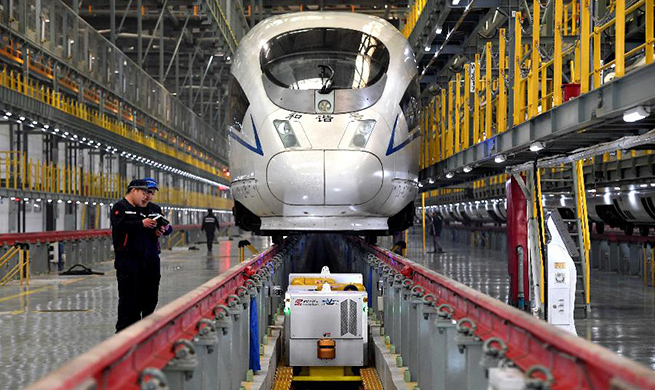CHICAGO, Feb. 20 (Xinhua) -- Surgery, physical therapy and injections can prevent spinal deterioration and lead to improvements in adults with scoliosis, a study led by spine surgeon Keith H. Bridwell at Washington University School of Medicine in St. Louis found.
The study enrolled 286 patients, with 144 in the non-operative group and 142 in the operative group. All were symptomatic patients aged 40 to 80 who had at least a 30-degree curve in the lower spine. The non-operative patients were treated with therapies such as physical therapy, anti-inflammatory drugs and injections that deliver pain medications directly to nerve roots along the spinal column. During the study period, 29 of the non-operative patients changed their minds, or their conditions deteriorated, and they decided to have surgery.
The new findings were published Wednesday in The Journal of Bone and Joint Surgery.
In general, patients who had surgery experienced less pain following the operation and were better able to function in day-to-day life two years later. However, during the study period that ran from 2010-2017, 14 percent of the patients who had surgery required at least one additional operation to correct subsequent complications.
At the end of the study, the average surgery patient had improved. Meanwhile, those who didn't have surgery were functioning at about the same level after two years, but most had not gotten worse.
"A fair number of doctors have suggested doing surgery before a patient's condition deteriorates," said the study's first author, Michael P. Kelly, an associate professor of orthopedic surgery and of neurological surgery at Washington University. "But we found that, on average, patients are unlikely to rapidly get worse. Those who don't have severe pain and can easily carry out their daily activities seem to progress slowly and often their symptoms are not severe enough to undergo the risks of surgery."
In fact, the most important factor in deciding whether to operate was the extent of a patient's disability, and how much that disability interfered with day-to-day life.
Some 15 percent of adults in the United Sates have some type of spine deformity, with lumbar scoliosis being the most common.

















